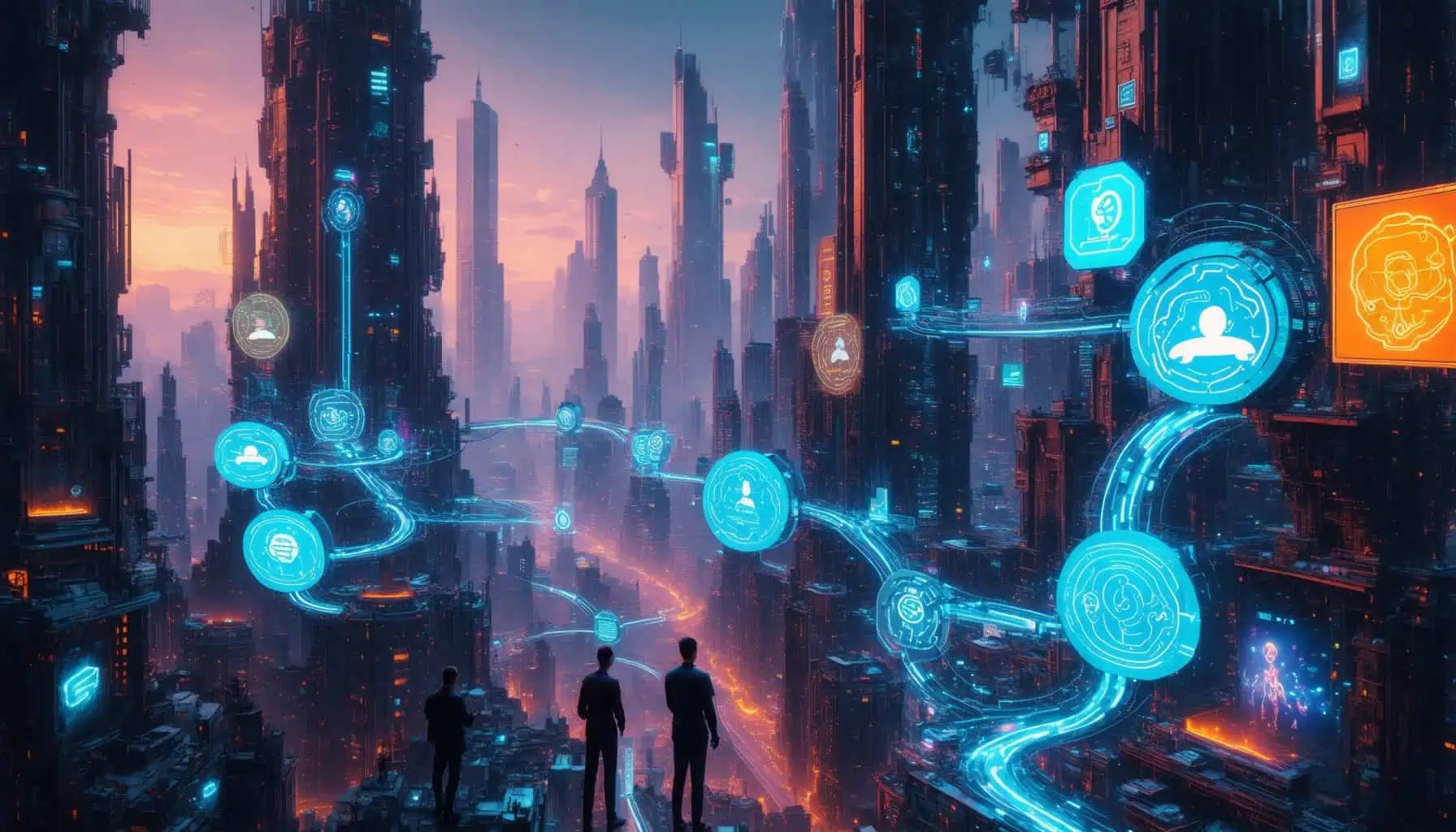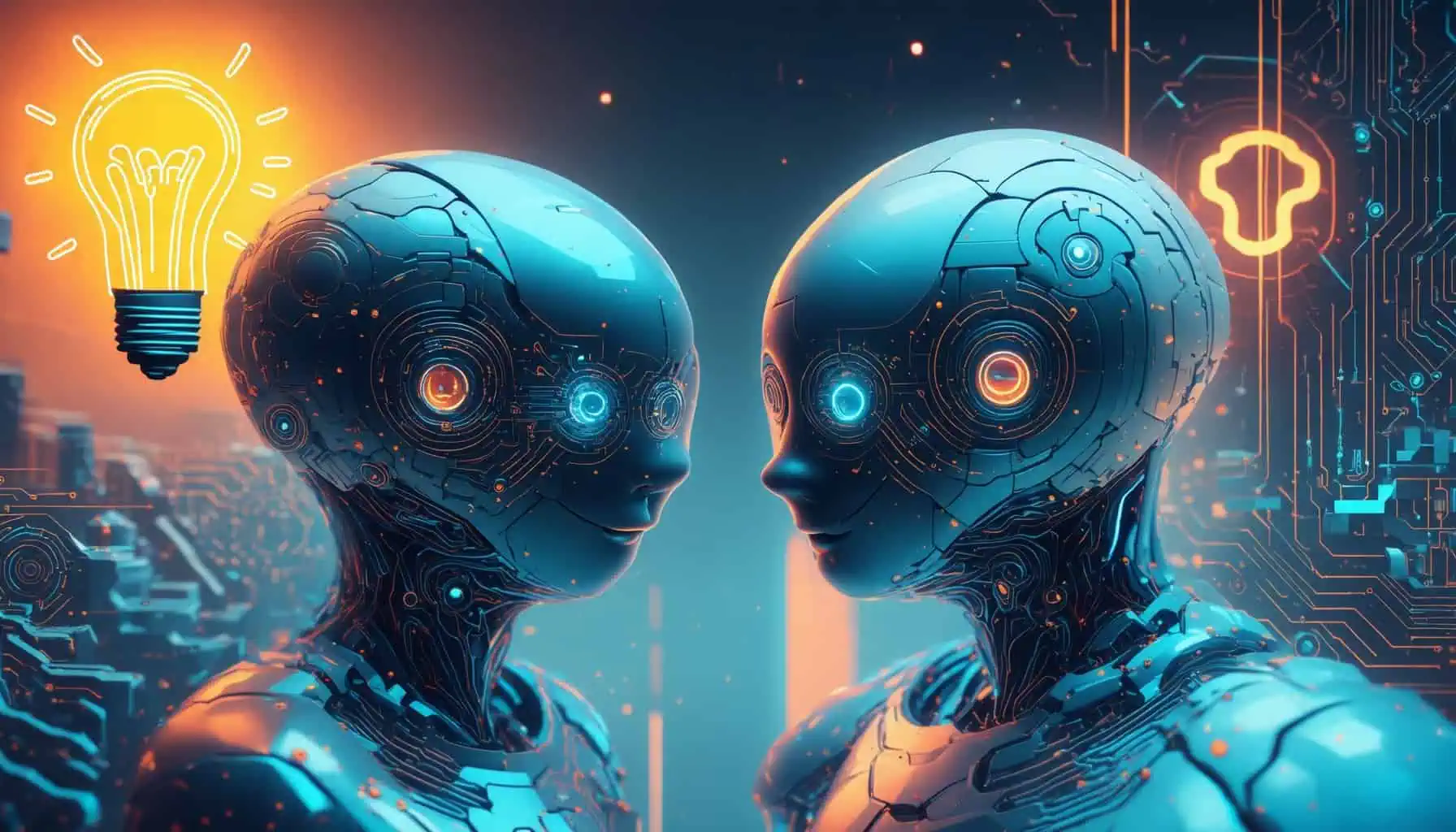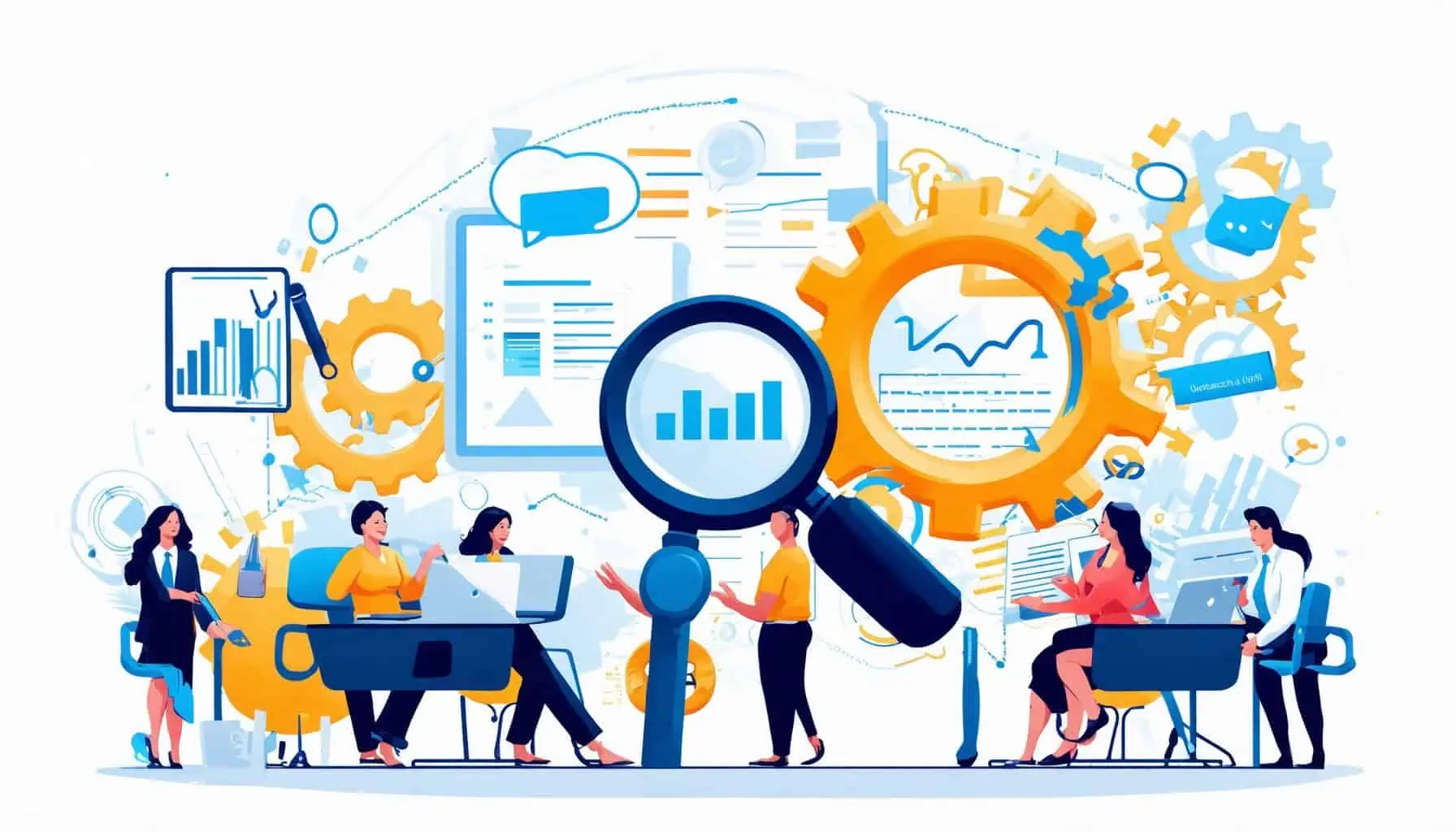Key Takeaways
- Transformative AI Advancements: By 2025, chatbots will leverage enhanced Natural Language Processing (NLP) for more accurate and human-like interactions.
- Personalization and Contextual Awareness: Future chatbots will utilize data analytics to deliver tailored experiences, improving customer engagement and satisfaction.
- Multichannel Integration: Expect seamless integration across platforms, enabling consistent customer interactions through social media, websites, and messaging apps.
- Voice Interface Adoption: Voice recognition technology will enable users to interact with chatbots via voice commands, enhancing accessibility and convenience.
- AI-Driven Insights: Chatbots will become invaluable for businesses by providing analytics on customer behavior, leading to continuous service improvements.
- Ethical Considerations: Data privacy and transparency will be critical as chatbots evolve, necessitating adherence to ethical guidelines in AI development.
- Market Growth Projections: The chatbot market is expected to reach approximately USD 27.29 billion by 2030, driven by rising automation and AI advancements.
As we stand on the brink of a technological revolution, the chatbot future is more exciting than ever. With predictions pointing towards significant advancements by 2025, this article will delve into the transformative trends and innovations that are shaping the landscape of conversational AI. From exploring chatbot future examples that illustrate the potential of these digital assistants to discussing whether chatbots will replace Google in the search arena, we will cover key developments that every tech enthusiast should watch. Additionally, we will analyze the chatbot future scope across various industries, including healthcare and customer support, and consider the implications of AI chatbot development on user experience. Join us as we navigate the chatbot future and uncover what lies ahead for this dynamic technology.
What is the future of chatbots 2025?
The future of chatbots in 2025 is set to be a transformative journey, driven by advancements in artificial intelligence and evolving consumer expectations. As we look ahead, several key innovations and trends are emerging that will shape the chatbot landscape.
Chatbot future examples: Innovations on the Horizon
As we approach 2025, the chatbot future is bright with innovative examples that showcase the potential of AI-driven technology. Here are some notable advancements:
- Enhanced Natural Language Processing (NLP): By 2025, chatbots will leverage advanced NLP algorithms, enabling them to understand and respond to customer inquiries with greater accuracy and context. This will lead to more human-like interactions, improving customer satisfaction and engagement.
- Personalization and Contextual Awareness: Future chatbots will utilize data analytics to provide personalized experiences. By analyzing user behavior and preferences, chatbots will offer tailored recommendations and solutions, thereby enhancing the overall customer experience.
- Integration with Multichannel Platforms: The future of chatbots will see seamless integration across various communication channels, including social media, websites, and messaging apps. This multichannel approach will allow businesses to maintain consistent and efficient customer interactions, regardless of the platform used.
- Increased Use of Voice Interfaces: With the rise of voice-activated devices, chatbots will increasingly incorporate voice recognition technology. This shift will enable users to interact with chatbots through voice commands, making the experience more accessible and convenient.
- AI-Driven Insights and Analytics: Chatbots will not only serve as customer service tools but also as valuable sources of data. Businesses will harness AI-driven analytics to gain insights into customer behavior, preferences, and pain points, allowing for continuous improvement in service delivery.
- Ethical Considerations and Transparency: As chatbots become more prevalent, ethical considerations surrounding data privacy and transparency will take center stage. Companies will need to ensure that their chatbots operate within ethical guidelines, providing users with clear information about data usage and consent.
In conclusion, the chatbot future is poised for transformative growth, characterized by enhanced AI capabilities, personalized interactions, and ethical considerations. Businesses that embrace these trends will not only improve customer satisfaction but also gain a competitive edge in the evolving digital landscape.
Chatbot future trends: Key Developments to Watch
As we delve deeper into the chatbot future trends, several key developments are set to redefine how businesses interact with customers:
- Generative AI Adoption: According to the CMSWire 2025 Digital Customer Experience (DCX) Report, the adoption of generative AI in customer service chatbots is projected to rise from 30% to 40%. This increase indicates a growing integration of sophisticated AI technologies across various platforms, enhancing the capabilities and effectiveness of chatbots in customer interactions.
- AI Chatbot Future Scope: The scope of AI chatbots will expand beyond simple queries to complex interactions, allowing for more meaningful conversations that can drive customer loyalty and retention.
- Chatbot Future Health: The integration of chatbots in healthcare communication will revolutionize patient interactions, providing timely information and support while maintaining privacy and compliance.
- Multilingual Capabilities: Future chatbots will increasingly support multiple languages, enabling businesses to cater to a global audience and enhance user experience through localized interactions.
These trends highlight the dynamic nature of the chatbot landscape, emphasizing the importance of staying ahead of technological advancements to maximize customer engagement and satisfaction.

Will Chatbots Replace Google?
Future of Chatbots and Conversational AI: A New Era of Search
The question of whether AI chatbots will replace Google search is complex and multifaceted. While chatbots are revolutionizing the way we interact with information, it is unlikely that they will fully replace traditional search engines like Google in the near future. Here are several key points to consider:
1. **Complementary Technologies**: Chatbots and search engines serve different purposes. Chatbots, powered by AI, excel in providing conversational responses and personalized assistance. They can streamline customer service and enhance user engagement. In contrast, Google search is optimized for retrieving vast amounts of information quickly and efficiently. Users may choose to use both tools depending on their specific needs—chatbots for quick interactions and Google for comprehensive searches.
2. **Advancements in AI**: Recent developments in natural language processing (NLP) and machine learning have significantly improved chatbot capabilities. For instance, models like OpenAI’s GPT-3 can generate human-like responses, making chatbots more effective in handling queries. However, these advancements still rely on extensive databases and algorithms that underpin search engines like Google.
3. **User Behavior Trends**: Research indicates that users often prefer the structured results provided by search engines for complex queries. According to a study by Pew Research Center, 74% of adults in the U.S. use search engines to find information online, highlighting the enduring reliance on traditional search methods (Pew Research Center, 2021).
4. **Integration Possibilities**: There is potential for integration between chatbots and search engines. For example, platforms like Messenger Bot can enhance user experience by allowing users to interact with search results in a conversational format. This hybrid approach could lead to more efficient information retrieval while maintaining the depth of traditional search.
5. **Future Outlook**: The future may see a coexistence of chatbots and search engines, where each technology complements the other. As AI continues to evolve, we may witness more sophisticated interactions that blend the immediacy of chatbots with the comprehensive search capabilities of Google.
In conclusion, while AI chatbots are transforming the landscape of information retrieval, they are unlikely to replace Google search entirely. Instead, they will likely coexist, each serving unique user needs and preferences. For further reading on the impact of AI on search technologies, refer to sources such as the Journal of Artificial Intelligence Research and industry reports from Gartner.
AI Chatbot Development: Enhancing User Experience
The evolution of AI chatbot development is pivotal in enhancing user experience across various platforms. As we look toward the future, several trends are emerging that will shape how chatbots interact with users:
1. **Personalization**: The future of chatbots is leaning heavily towards personalization. By utilizing data analytics, chatbots can tailor responses based on user preferences and past interactions. This level of customization not only improves user satisfaction but also increases engagement rates, making the chatbot experience more relevant and enjoyable.
2. **Multilingual Capabilities**: As businesses expand globally, the demand for multilingual support in chatbots is growing. The ability to communicate in various languages allows companies to cater to a diverse audience, enhancing customer service and broadening market reach. Platforms like the [AI Chat Assistant](https://brainpod.ai/ai-chat-assistant/) from Brain Pod AI exemplify this trend, offering robust multilingual support.
3. **Integration with Other Technologies**: Future chatbot developments will likely see deeper integration with other technologies, such as voice recognition and augmented reality. This convergence will create more immersive and interactive experiences for users, allowing them to engage with chatbots in innovative ways.
4. **Continuous Learning**: AI chatbots will increasingly employ machine learning algorithms to improve their responses over time. By analyzing user interactions, chatbots can learn from mistakes and adapt to provide more accurate and helpful answers, thereby enhancing their overall effectiveness.
5. **Focus on Security**: As chatbots handle sensitive information, ensuring user privacy and data security will be paramount. Future developments will prioritize secure interactions, fostering trust between users and chatbot platforms.
In summary, the future of AI chatbot development is bright, with a strong focus on enhancing user experience through personalization, multilingual capabilities, and advanced integrations. As these technologies evolve, they will play a crucial role in shaping how we interact with digital platforms. For more insights on chatbot functionalities, check out our guide on [Creating a Chatbot](https://messengerbot.app/mastering-how-to-make-a-chat-bot-in-messenger-a-comprehensive-guide-to-setting-up-automating-and-enhancing-your-facebook-messenger-experience/).
How big is the chatbot market in 2030?
The global chatbot future is poised for significant growth, with projections indicating that the chatbot market will reach approximately USD 27.29 billion by 2030. This remarkable expansion is driven by a compound annual growth rate (CAGR) of 23.3% from 2025 to 2030. The increasing demand for automated customer service solutions and advancements in artificial intelligence technologies are key factors fueling this growth. According to a report by Grand View Research, Inc., businesses are increasingly adopting chatbots to enhance customer engagement, streamline operations, and reduce costs.
Chatbot future value: Economic Impact and Growth
The economic impact of the chatbot future is profound, as organizations across various sectors recognize the value of integrating chatbots into their operations. Key factors contributing to the market expansion include:
- Rising Adoption Across Industries: Sectors such as e-commerce, healthcare, and finance are leveraging chatbots for improved customer interaction and support.
- Technological Advancements: Innovations in natural language processing (NLP) and machine learning are enhancing chatbot capabilities, making them more effective in understanding and responding to user queries.
- Increased Investment: Companies are investing heavily in chatbot technology to stay competitive, leading to a surge in market growth.
As businesses continue to integrate chatbots into their operations, the chatbot future value will evolve, with new applications and functionalities emerging. For further insights, refer to the comprehensive analysis provided by Grand View Research, Inc..
Chatbot future scope: Expanding Applications Across Industries
The chatbot future scope is vast, with applications expanding across numerous industries. From enhancing customer service in retail to providing instant support in healthcare, the versatility of chatbots is becoming increasingly evident. Here are some notable areas where chatbots are making a significant impact:
- E-commerce: Chatbots are revolutionizing online shopping experiences by assisting customers with product recommendations, order tracking, and personalized support.
- Healthcare: In the healthcare sector, chatbots are being utilized for appointment scheduling, symptom checking, and providing patients with timely information.
- Finance: Financial institutions are deploying chatbots to assist customers with account inquiries, transaction alerts, and fraud detection.
As the demand for efficient communication solutions grows, the chatbot future will likely see even more innovative applications, further solidifying their role in various industries.
What is the Next Generation of Chatbots?
The next generation of chatbots represents a significant evolution in conversational AI, primarily characterized by advancements in generative AI technology. Unlike traditional chatbots that rely on predefined responses, the latest generative AI chatbots utilize large language models (LLMs) to create dynamic and contextually relevant content. This includes not only text but also images and audio, enhancing user interaction and engagement.
Chatbot Future App: Integrating Advanced Features
As we look toward the chatbot future, the integration of advanced features is crucial. Here are some key innovations:
- Generative AI Capabilities: These chatbots can produce original content tailored to user inquiries, making conversations feel more natural and personalized. For instance, they can generate detailed responses, creative writing, or even assist in complex problem-solving scenarios.
- Natural Language Understanding (NLU): The next generation of chatbots employs advanced NLU techniques, allowing them to comprehend context, sentiment, and nuances in user input. This capability enables them to respond more accurately and empathetically, improving user satisfaction.
- Integration with Other Technologies: Modern chatbots are increasingly integrated with various platforms and services, such as customer relationship management (CRM) systems and social media channels. This integration allows for a seamless user experience and more efficient data handling.
- Continuous Learning: Leveraging machine learning algorithms, these chatbots continuously improve their performance by learning from interactions. This adaptability ensures that they remain relevant and effective over time.
- Applications Across Industries: The next generation of chatbots is being deployed in diverse sectors, including healthcare, finance, and e-commerce. For example, in healthcare, chatbots can assist in patient triage and provide information on medical conditions, while in e-commerce, they can enhance customer service by providing instant support.
- Ethical Considerations: As chatbots become more sophisticated, ethical considerations surrounding their use, such as data privacy and transparency, are paramount. Developers are focusing on creating guidelines to ensure responsible AI deployment.
Chatbot Future Predictions: Expert Insights and Analysis
Experts predict that the chatbot future will be shaped by several key trends:
- Enhanced Personalization: Future chatbots will leverage user data to provide highly personalized experiences, making interactions more relevant and engaging.
- Multilingual Capabilities: With the rise of global commerce, chatbots will increasingly support multiple languages, allowing businesses to reach a broader audience. This aligns with the AI Chat Assistant capabilities that focus on multilingual support.
- Increased Automation: As automation becomes more prevalent, chatbots will handle more complex tasks, reducing the need for human intervention and improving efficiency.
- Focus on User Experience: The chatbot future you will prioritize user experience, ensuring that interactions are smooth, intuitive, and satisfying.
In conclusion, the next generation of chatbots is marked by their ability to generate content, understand complex language, and learn from interactions, making them invaluable tools across various applications. For further insights into chatbot technology, explore resources like Brain Pod AI for innovative AI solutions.

Will Chatbots Replace You?
As we explore the chatbot future, a common concern arises: will chatbots replace humans? The answer is no; instead, they will enhance human capabilities and collaboration. Chatbots, powered by artificial intelligence (AI), are designed to automate repetitive tasks, improve customer service, and provide instant responses to inquiries. However, they lack the emotional intelligence, creativity, and complex problem-solving skills that humans possess. According to a study by McKinsey, while automation can handle up to 45% of tasks, it is most effective when augmenting human roles rather than replacing them entirely.
Chatbot Future You: The Human-AI Collaboration
The future of work involves humans and chatbots working together. Here are some key insights into how this collaboration will shape our professional landscape:
- Collaboration is Key: Chatbots can handle routine queries, allowing humans to focus on more complex issues that require critical thinking and empathy. This synergy can lead to improved efficiency and customer satisfaction.
- Continuous Learning: Chatbots are not static; they learn from interactions and improve over time. For instance, platforms like Messenger Bot utilize machine learning algorithms to enhance their conversational abilities, making them more effective in understanding and responding to user needs.
- Human Touch: While chatbots can provide quick answers, they cannot replicate the human touch in customer interactions. Emotional connections and nuanced understanding are areas where humans excel, ensuring that sensitive issues are handled appropriately.
- Future Trends: As AI technology evolves, chatbots will become more sophisticated, but their role will be to support and empower human workers rather than replace them. The integration of AI in the workplace is expected to create new job opportunities that require human oversight and creativity.
In conclusion, chatbots will not replace humans; they will serve as valuable tools that enhance productivity and collaboration in various sectors. Embracing this technology can lead to a more efficient and innovative work environment. For further insights, refer to research from the World Economic Forum and the Harvard Business Review on the evolving relationship between AI and the workforce.
Chatbot Success Rate: Measuring Effectiveness and Efficiency
Understanding the chatbot success rate is crucial for businesses looking to implement these tools effectively. Here are some metrics to consider:
- Response Time: A key indicator of chatbot effectiveness is how quickly it responds to user inquiries. Faster response times generally lead to higher user satisfaction.
- User Engagement: Tracking how often users interact with the chatbot can provide insights into its effectiveness. High engagement rates often correlate with a well-designed user experience.
- Resolution Rate: This metric measures the percentage of inquiries resolved by the chatbot without human intervention. A higher resolution rate indicates a more effective chatbot.
- Customer Feedback: Gathering user feedback can help assess the chatbot’s performance and identify areas for improvement. Regular updates based on this feedback can enhance the overall user experience.
By focusing on these metrics, businesses can ensure that their chatbots are not just tools for automation but also enhance the overall customer experience. For more information on optimizing chatbot performance, check out How Messenger Bots Work.
What is the biggest AI trend in 2025?
The biggest AI trend in 2025 encompasses several transformative themes that executives and investors should closely monitor. One of the most significant trends is the rise of AI reasoning and custom silicon. The demand for specialized chips designed for AI reasoning is expected to surge, as companies invest in custom silicon to enhance processing power and efficiency. This advancement is crucial for supporting the growing computational needs of AI systems, enabling more complex models and applications.
Another key trend is the shift towards cloud migrations and AI workloads. Hyperscalers like Amazon Web Services and Microsoft Azure are increasingly viewing cloud migrations as significant revenue opportunities. By integrating AI workloads into cloud services, businesses can leverage scalable resources for data processing and machine learning, driving innovation and operational efficiency.
Additionally, the use of large language models (LLMs) in enterprises is gaining traction. These models can automate customer service, generate content, and provide insights from vast datasets, leading to substantial productivity gains and improved decision-making processes. The integration of AI into everyday applications, including messaging platforms, is expected to become more sophisticated, enhancing user experiences through AI-driven interactions.
Chatbot future trends 2024: Preparing for the Next Wave
As we look ahead to the chatbot future, several trends are emerging that will shape the landscape of AI-driven communication. One notable trend is the increasing focus on multilingual capabilities. As businesses expand globally, the demand for chatbots that can communicate in multiple languages is growing. This aligns with the AI Chat Assistant from Brain Pod AI, which offers multilingual support, allowing businesses to reach a diverse audience effectively.
Another trend is the integration of advanced features into chatbots, such as enhanced natural language processing and machine learning capabilities. These advancements will enable chatbots to understand context better and provide more personalized interactions. The chatbot future scope includes applications across various industries, from healthcare to e-commerce, where chatbots can streamline communication and improve customer satisfaction.
Coveo chatbot: Leading the Charge in AI Integration
The Coveo chatbot exemplifies the integration of AI in enhancing user experiences. By leveraging AI-driven insights, Coveo’s chatbot can provide tailored recommendations and support, significantly improving engagement rates. This aligns with the broader trend of utilizing AI to enhance customer interactions, making it a valuable tool for businesses looking to optimize their communication strategies.
As we prepare for the future, understanding these chatbot future trends will be essential for businesses aiming to stay competitive in an increasingly digital landscape. The potential for chatbots to transform communication and customer engagement is immense, and staying ahead of these trends will be crucial for success.
Chatbot Future Health: Transforming Healthcare Communication
The chatbot future in healthcare is poised for significant transformation, enhancing communication between patients and providers. As we look towards 2025 and beyond, the integration of AI-driven chatbots will streamline processes, improve patient engagement, and facilitate better health outcomes. With the rise of telemedicine and digital health solutions, chatbots are becoming essential tools for healthcare providers.
Chatbot Future Lang: Multilingual Capabilities and Global Reach
One of the most exciting aspects of the chatbot future is its multilingual capabilities. As healthcare becomes increasingly global, the ability to communicate in multiple languages is crucial. Chatbots equipped with advanced language processing can cater to diverse populations, ensuring that language barriers do not hinder access to healthcare services. This chatbot future lang feature not only enhances patient satisfaction but also expands the reach of healthcare providers to non-native speakers.
For instance, platforms like Brain Pod AI’s AI Chat Assistant are leading the way in developing multilingual chatbots that can effectively engage users in their preferred languages. This capability is essential for improving health literacy and ensuring that all patients receive accurate information regarding their health.
Chatbot Future Electronics: Revolutionizing Customer Support
The chatbot future electronics sector is also experiencing a revolution, particularly in customer support. As electronic devices become more complex, the need for efficient customer service solutions grows. Chatbots can provide instant support for troubleshooting, product inquiries, and warranty claims, significantly reducing wait times and enhancing user experience.
By integrating chatbots into customer support systems, electronics companies can offer 24/7 assistance, ensuring that customers receive timely help regardless of their time zone. This not only boosts customer satisfaction but also improves the chatbot success rate in resolving issues effectively. Companies like Brain Pod AI are at the forefront of this trend, providing innovative solutions that empower businesses to enhance their customer service capabilities.




